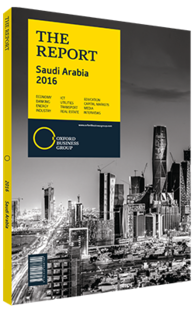A media zone in Saudi Arabia would provide an avenue to develop new talent
For years there has been talk of establishing a media production city in Saudi Arabia, but recent comments by Adel Al Toraifi, the new minister of culture and information, appointed in early 2015, suggest these plans could be moving forward. The Kingdom’s new National Transformation Programme, released in June 2016, includes direct funding for the establishment of overseas media centres, as well as the allocation of SR624m ($166.4m) to set up a Saudi media city.
“Saudi Arabia consumes a massive amount of media, yet we haven’t developed an industry around this,” Bander Asiri, president of the General Commission for Audiovisual Media, told OBG. “This is something that can provide Saudis not only with jobs, but with careers in an exciting industry.”
The city, it has been suggested, would provide both a physical location and the necessary technical facilities for media groups, including local and international journalists working in the country, with Al Toraifi saying these groups would be given the flexibility to operate within the rules and regulations of the Kingdom. He added that the move was part of Saudi Arabia’s plan to strengthen its media presence abroad. “We have lagged behind. We are trying to deal with it skilfully,” Arabian Business reported Al Toraifi saying in February 2016.
Regional Rivalry
A report by AT Kearney, the global management consulting firm, titled “Middle East Media on the Move”, stated that the emergence of media cities throughout the Middle East would “continue to be a major component of the expansion and liberalisation of the region’s media industry”. Egypt successfully built the region’s first dedicated media zone in 2000, and Jordan and Dubai both followed suit one year later. The report added that plans for a Saudi media city were being discussed even back then. “Significant regulatory change will be required for success, but the potential is great for media companies of all sizes to gain access to the largest population base in the GCC and one of the wealthiest nations in the Middle East,” it noted. According to AT Kearney, the creation of Dubai Media City helped increase the number of daily newspapers in the UAE by 50% between 2003 and 2007. There is hope within the Kingdom that a domestic media zone could help the country compete in the industry, putting it on par with the media city and free zone in Dubai.
Still Unclear
Saudi authorities previously announced plans to establish a media production city that would have advanced satellite television transmission facilities aimed at encouraging private channels to broadcast their programmes from within the Kingdom rather than from abroad. Whether this is still on the agenda and can succeed in bringing in a significant number of foreign private stations remains to be seen. At present the concept of how the media city might look and work is still in the planning stage.
“We are in the process of building the business plan. When we talk about a cluster or ecosystem from a virtual aspect, in allowing the whole industry to interact virtually and physically, that is what the Media City should look like,” Fahad Almoamar, director of investment at the General Commission for Audiovisual Media, told OBG. “Anybody directly or indirectly related to media, such as YouTube or Snapchat, these are some of the companies we want as part of this cluster. Not just traditional media. We want to encourage media platforms and there is a big relationship between tech and media.”
The proposed media city is expected to be established as a free zone, which will benefit companies that are looking to enter the Saudi market. Whether the new zone will benefit from lighter regulations could also have a significant impact on its growth, as well as how significant of a player it can become. That said, if the authorities can establish a media city with the right infrastructure, concessions and regulatory landscape, it is likely that companies will flock to it.
You have reached the limit of premium articles you can view for free.
Choose from the options below to purchase print or digital editions of our Reports. You can also purchase a website subscription giving you unlimited access to all of our Reports online for 12 months.
If you have already purchased this Report or have a website subscription, please login to continue.

